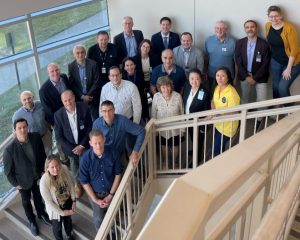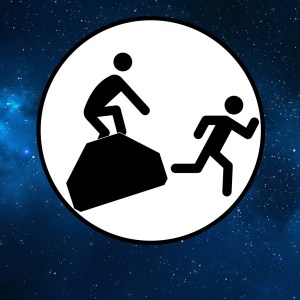The Human Health and Performance Directorate is always looking for opportunities to collaborate with groups outside of the Johnson Space Center. If you have a technology or collaboration partnership opportunity you would like us to consider, please fill out and submit our Collaborative Opportunity and Technical Need Intake form. This is an important step of our formal review process in which the appropriate subject matter expert will be assigned to evaluate whether your proposed opportunity meets NASA’s prioritized needs criteria. Please provide as much information as possible for review.
NASA Applied Research
The Human Research Program (HRP) and National Space Biomedical Research Institute (NSBRI) offer solicitations for applied research work to support their human spaceflight goals. These include several solicitation, review, and funding mechanisms such as NASA Research Announcements (NRA), NASA Small Business Innovation Research (SBIR) awards, and specific research grants. In addition, please find the NASA HRP Evidence Reports which provide the current record of the state of knowledge from research and operations for each of the defined human health and performance risks for future NASA exploration missions.
NASA Space Act Agreements
The National Aeronautics and Space Act of 1958 (the Space Act), as amended, provides NASA with the unique authority to enter into a wide range of “other transactions,” commonly referred to as Space Act Agreements (SAAs). The Agency enters into SAAs with various partners to advance NASA mission and program objectives, including international cooperative space activities. For inquiries or more information related to an SAA with HH&P, please contact Marci Paden.
NASA Human Risk Technology and Research Needs
The NASA Human Research Program (HRP) investigates and mitigates the highest risks to human health and performance, providing essential countermeasures and technologies for human space exploration. Risks include physiological effects from radiation, hypogravity, and terrestrial environments, as well as unique challenges in medical support, human factors, and behavioral health support. Following is a list of NASA’s highest priority human risks and needs. Please contact us if you are interested in partnering with NASA on research and technology development projects in any of the areas below to advance human spaceflight.
- Risk of Spaceflight-Induced Intracranial Hypertension/Vision Alteration
- Technology:
- Non-invasive Intracranial Pressure (ICP) Measure
- Knowledge:
- Prediction of elevated CO2 on Intracranial Pressure
- Prediction of individual sensitivities due to fluid shift to elevated ICP
- Technology:
- Risk of Bone Fracture due to spaceflight Induced bone changes
- Technology:
- Small, lightweight device to measure bone quality
- Knowledge:
- Methods to predict bone fracture in a younger population (40-year-olds)
- Methods to measure bone strength with DXA
- Technology:
- Risk of Acute and Chronic Carbon Dioxide Exposure
- Technology:
- Portable efficient CO2 Scrubber
- Knowledge:
- Effects of elevated CO2 on cognitive function
- Technology:
- Risk of Injury from Dynamic Loads
- Knowledge:
- Ability to predict (modeling) injury from impact (multi-axis)
- Knowledge:
- Risk of Impaired Performance Due to Reduced Muscle Mass, Strength & Endurance
- Knowledge:
- Methods to measure strength with the Advanced Resistive Exercise Device (ARED)
- Knowledge:
- Reduced Physical Performance Capabilities Due to Reduced Aerobic Capacity
- Knowledge:
- Methods to predict max aerobic capacity with submaximal testing in microgravity
- Knowledge:
- Risk of Ineffective or Toxic Medications due to Long Term Storage
- Knowledge:
- Data on the effectiveness of medications over a long period of storage
- Methods to increase storage duration of medications
- Knowledge:
- Risk of Hypoxia
- Knowledge:
- Data on the effects of long term mild hypoxia
- Knowledge:
- Risk of Kidney Stone Formation
- Knowledge:
- Methods for early detection (prior to symptoms) kidney stones
- Knowledge:
Johnson Space Center Front Door
Explore the Front Door of NASA’s Johnson Space Center and White Sands Test Facility! Whether you represent industry, government, academia, or the general public, step inside and explore the opportunities, capabilities, technology and data available to you.



































